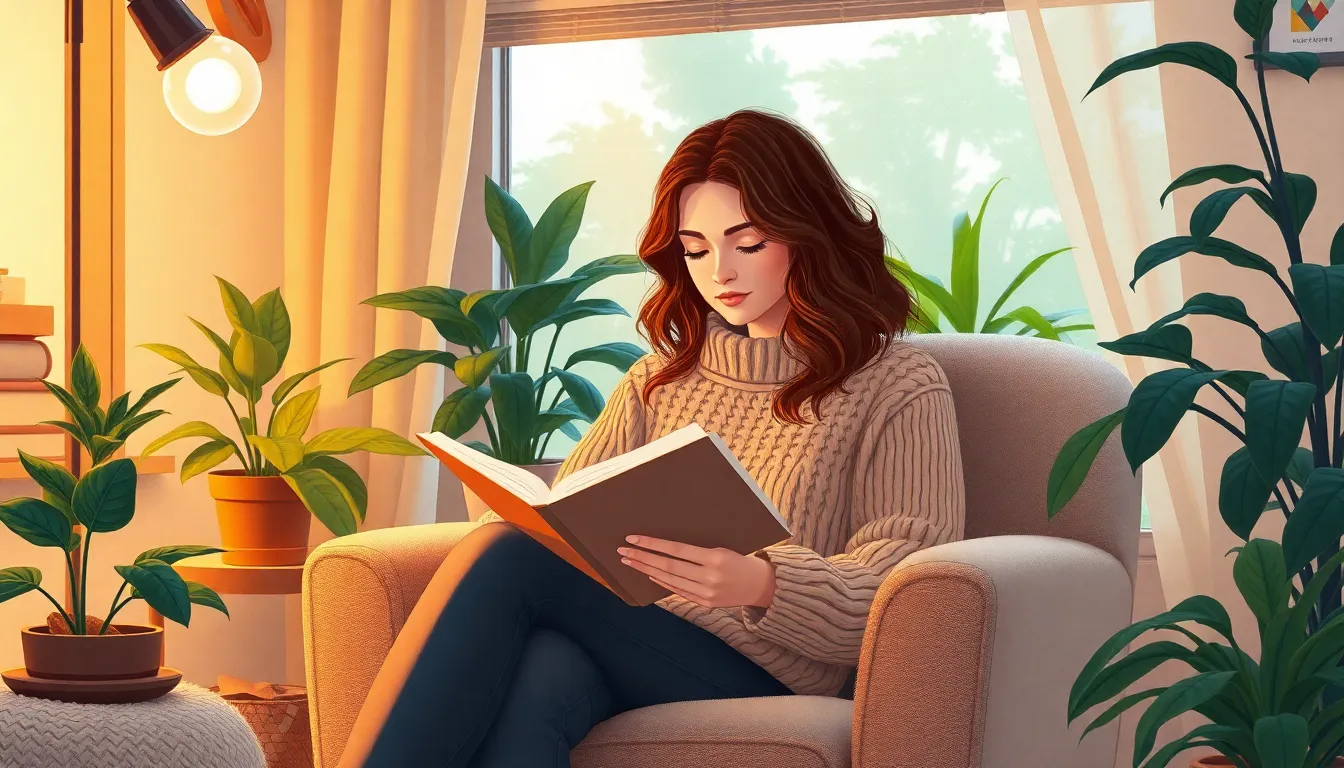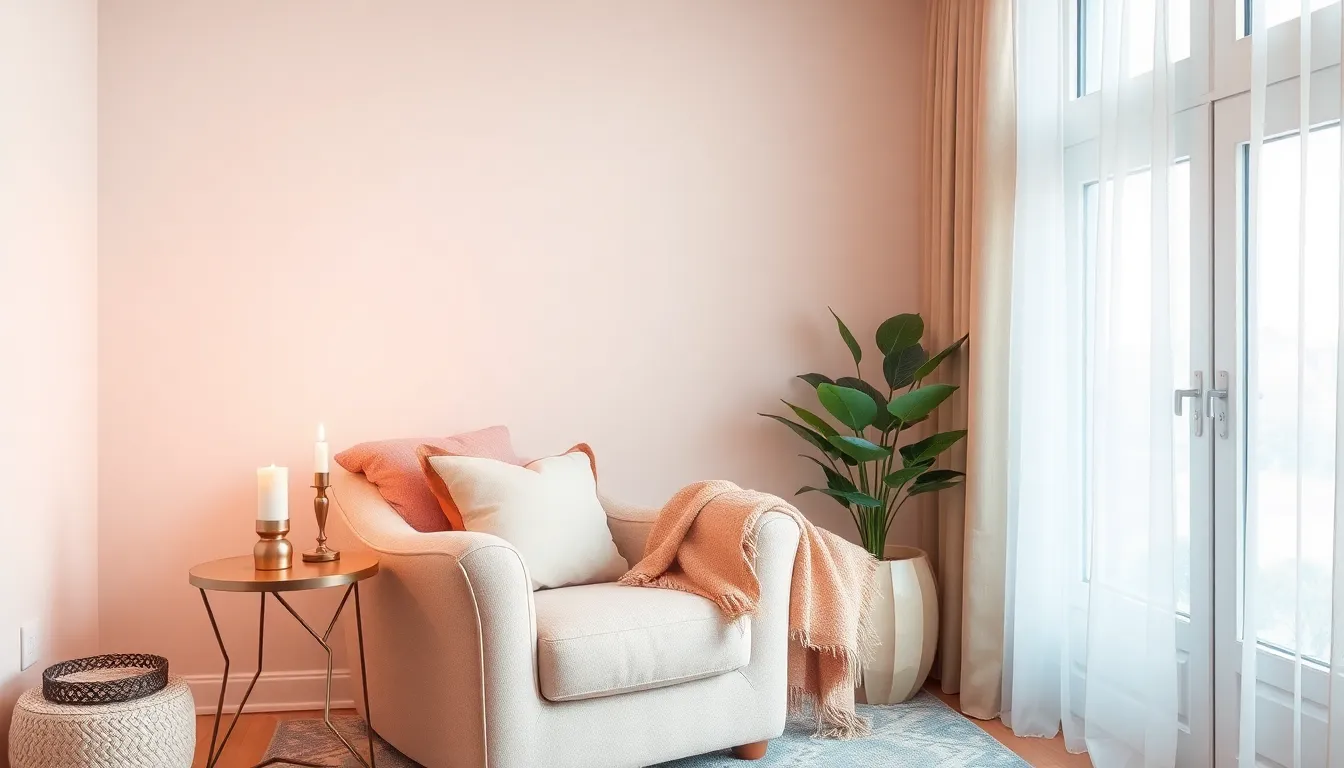Table of Contents
ToggleIn a world buzzing with chaos and endless to-do lists, finding a haven of tranquility can feel like searching for a needle in a haystack. Relaxing spaces are more than just a trend; they’re essential for recharging the mind and body. Imagine sinking into a cozy nook with soft lighting and soothing scents, where stress melts away like ice cream on a summer day.
Creating these serene retreats doesn’t require a degree in interior design or a bank account that rivals a small country. With a sprinkle of creativity and a dash of humor, anyone can transform their surroundings into a personal oasis. Dive into the art of crafting relaxing spaces that not only invite peace but also inspire joy. After all, who wouldn’t want a spot to unwind, sip tea, and pretend the world outside doesn’t exist for just a little while?
Understanding Relaxing Spaces
Creating relaxing spaces involves transforming areas into serene retreats, allowing individuals to recharge mentally and physically.
Definition of Relaxing Spaces
Relaxing spaces are environments designed to evoke calmness and tranquility. These areas typically incorporate comfortable seating, soft lighting, and soothing colors, which contribute to a peaceful atmosphere. Relaxing spaces include personal nooks, meditation corners, or garden spots, where sounds and scents promote relaxation. Each element plays a vital role in crafting an inviting ambiance, enhancing overall well-being.
Importance of Relaxing Spaces
Relaxing spaces serve as vital zones for stress relief and mental clarity. Studies indicate that spending time in such environments boosts mood and enhances focus. Individuals can achieve greater productivity and creativity by regularly retreating to these calming areas. Furthermore, relaxing spaces encourage mindfulness and foster connections with oneself. They offer necessary escapes from daily demands, contributing to improved mental and emotional health.
Types of Relaxing Spaces

Different types of relaxing spaces exist both indoors and outdoors, each providing unique benefits for reducing stress and promoting tranquility.
Indoor Relaxing Spaces
Indoor relaxing spaces often feature comfortable seating arrangements, soft fabrics, and natural elements. Cozy reading nooks offer a perfect retreat, allowing individuals to sink into plush cushions with a good book. Meditation corners, equipped with calming colors and essential oil diffusers, invite mindfulness and relaxation. Soft lighting enhances these spaces, creating an intimate atmosphere free from harsh glare. Moreover, incorporating plants improves air quality while boosting overall mood, making indoor retreats more inviting.
Outdoor Relaxing Spaces
Outdoor relaxing spaces thrive on the beauty of nature and fresh air. Gardens adorned with colorful flowers and gentle sounds of water create serene environments conducive to reflection. Patios equipped with comfortable furniture serve as ideal spots for socializing or unwinding alone. Hammocks or swings offer a laid-back vibe, encouraging relaxation and leisure. Additionally, shaded areas with breezy canopies protect from sun exposure, maintaining comfort while connecting individuals with the outdoors.
Designing Your Relaxing Space
Creating a relaxing space involves thoughtful decisions regarding color schemes, materials, and furniture selection. Focus on options that enhance tranquility and comfort.
Color Schemes and Materials
Soft hues play a critical role in evoking calm. Neutral tones like beige, light gray, and soft pastels create serene backdrops. Incorporate natural materials such as wood and cotton to enhance the sense of warmth. Choose accessories made of breathable fabrics that promote relaxation. Textured elements like pillows and rugs also add coziness, inviting individuals to unwind. Select color palettes that reflect personal preferences while ensuring they support a peaceful ambiance. Earthy greens and ocean blues, for instance, can mimic nature and induce feelings of serenity.
Furniture Selection and Arrangements
Selecting comfortable furniture is essential for a relaxing space. Prioritize pieces that support relaxation, such as plush sofas and oversized chairs. Arrange seating to facilitate conversation or solitude, depending on the setting’s purpose. Group furniture to create distinct zones for various activities, like reading or meditation. Consider including multifunctional items, such as ottomans that serve as storage or extra seating. Ensuring adequate space between furniture pieces promotes ease of movement. Overall, the layout should encourage a fluid transition between restful moments and engaging activities.
Benefits of Relaxing Spaces
Creating relaxing spaces offers numerous advantages, particularly for mental and physical health.
Mental Health Advantages
Relaxing spaces greatly contribute to mental well-being. They foster a sense of peace, significantly reducing stress and anxiety levels. Exposure to calming environments prompts the brain to release neurotransmitters such as serotonin and dopamine, enhancing mood. Spending time in these serene areas encourages mindfulness, helping individuals focus on the present moment. Individuals who regularly utilize relaxing spaces report increased clarity and improved ability to manage emotions. Engaging in meditation or simply unwinding in these environments promotes self-reflection and personal growth. Ultimately, dedicating time to these havens cultivates a stronger, more resilient mental state.
Physical Health Benefits
Physical health benefits emerge when individuals frequent relaxing spaces. These environments lower blood pressure and heart rates, crucial for overall health. Time spent in calming settings can improve sleep quality, allowing the body to recover and rejuvenate. Additionally, incorporating elements like fresh air and natural light promotes better respiratory health. Regular visits to these spaces enhance workplace productivity and alleviate symptoms associated with chronic stress and fatigue. Those who prioritize relaxation often experience fewer physical ailments, highlighting the undeniable link between serenity and wellness.
Tips for Creating Your Own Relaxing Space
Creating a personal relaxing space enhances mental and physical well-being. Simple adjustments can transform any area into a tranquil retreat.
Budget-Friendly Ideas
Transforming a corner of a room doesn’t require a hefty budget. Using items like pillows, throws, and rugs can add comfort and warmth. Plants not only purify the air but also create a calming atmosphere. Thrift stores often have unique decor pieces that bring character. Soft, adjustable lighting can set the mood without overwhelming the senses. Adding essential oils or candles provides soothing fragrances at an affordable cost. Prioritizing DIY projects can lead to personalized decor that elevates relaxation.
Personalizing Your Space
Personal touches make any space feel unique and inviting. Choosing colors that resonate brings a sense of peace and calm. Art pieces and photographs can evoke happy memories, enhancing relaxation. Incorporating favorite books or inspirational quotes encourages self-reflection. Arranging furniture to suit personal preferences leads to a comfortable flow. Including soft textures fosters an inviting atmosphere, inviting longer periods of relaxation. Utilizing meaningful objects, like souvenirs from travels, adds depth and comfort to the environment.
Creating relaxing spaces is more than just a design choice; it’s a vital step toward enhancing overall well-being. By transforming ordinary areas into tranquil retreats, individuals can significantly reduce stress and promote mental clarity.
With simple adjustments and thoughtful choices, anyone can cultivate an environment that fosters peace and joy. Whether it’s through cozy seating, calming colors, or personal touches, these spaces serve as essential havens from daily chaos.
Embracing the art of relaxation can lead to profound improvements in both mental and physical health. Prioritizing these serene environments not only enriches personal lives but also encourages a more mindful and balanced existence.







